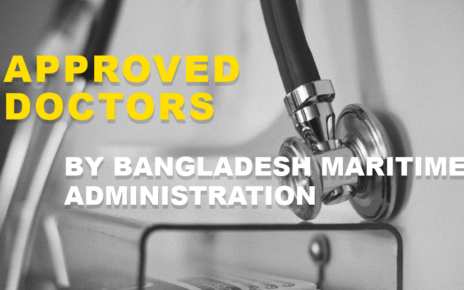Sea Trial of a Ship. Sea trials are a crucial phase in the construction and delivery of a ship, as they allow the shipbuilder and the owner to verify the performance and functionality of the vessel and its systems. One of the main components of sea trials is navigation trials, which test the ship’s ability to maneuver safely and accurately in various conditions. In this blog post, we will discuss some of the essential sea trial maneuvers (navigation trials) conducted on a ship and the typical objectives of each test.
Sea Trial of a Ship-And Test conducted
– Speed trials: These tests measure the ship’s maximum speed and fuel consumption at different power settings and sea states. The speed trials are usually conducted on a straight course with calm weather and water conditions. The objective is to verify that the ship meets the contractual speed requirements and to determine the optimum power setting for economical operation.
– Turning circle: This test evaluates the ship’s turning performance by measuring the turning diameter, advance, transfer, tactical diameter, and drift angle at different rudder angles and speeds. The turning circle is performed by applying a constant rudder angle and maintaining a steady speed until the ship completes a full circle. The objective is to assess the ship’s maneuverability and stability in turning situations and to compare the results with the theoretical predictions.
– Zig-zag: This test measures the ship’s course stability and response to rudder commands by executing a series of rapid changes in heading at a constant speed. The zig-zag test is performed by applying a series of rudder angles (such as 10°, 20°, or 30°) alternately to port and starboard until the ship reaches a specified overshoot angle. The objective is to determine the ship’s dynamic stability, rudder effectiveness, and steering gear performance.
– Crash stop: This test evaluates the ship’s stopping ability by applying full astern power from a steady speed and measuring the stopping distance and time. The crash stop test is performed by monitoring the ship’s speed, position, heading, propeller revolutions, shaft torque, and vibration during the deceleration. The objective is to verify that the ship can stop safely and quickly in an emergency situation and to assess the structural integrity of the propulsion system.
– Docking: This test simulates the ship’s docking maneuver by approaching a pier or a buoy at a low speed and using thrusters or tugs to align and secure the ship. The docking test is performed by measuring the ship’s speed, position, heading, distance from the pier or buoy, wind speed and direction, current speed and direction, and thruster or tug forces during the maneuver. The objective is to demonstrate that the ship can dock smoothly and accurately in various environmental conditions and to evaluate the effectiveness of the thrusters or tugs.
These are some of the essential sea trial maneuvers (navigation trials) conducted on a ship and their typical objectives. By performing these tests, the shipbuilder and the owner can ensure that the ship meets the design specifications and operational requirements and that it is ready for delivery and service.



